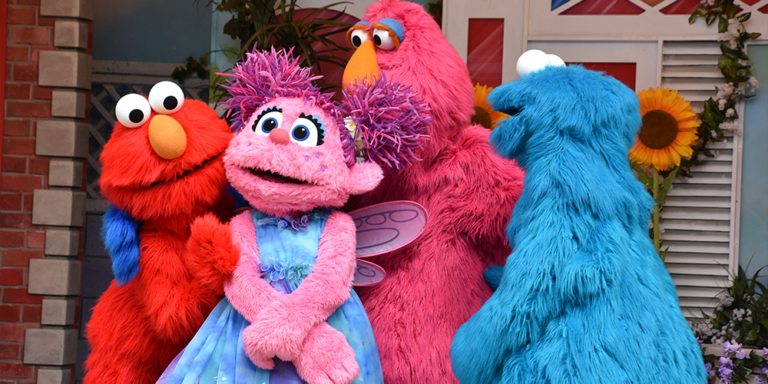One of the most challenging aspects for educators of English language learners (ELLs) is accurately assessing language development over time — oral language, in particular. Due to the conversational nature of language, it can be incredibly difficult to assess oral language while simultaneously engaging in conversation, not to mention recording the data as you go.
While the speaking and listening domains can be the hardest to objectively assess over time, reading and writing shouldn’t be overlooked. ELL educators are always looking through two lenses — content knowledge and English language development (ELD).
A few savvy strategies coupled with technology integration can enhance not only English language learning within the four domains (listening, speaking, reading, and writing) of ELD, but your assessment of language development over time as well.
The In-Flipped Classroom
When you’re facing the teacher time crunch, the in-flipped classroom can be your best friend. A traditional flipped classroom has students watch lessons at home and come back to school for practice. Unfortunately, not all of our ELLs have the resources at home to make this model work. With an in-flipped classroom, students watch the lesson in school ahead of direct instruction. Whether you’re a classroom teacher looking to push content ahead of a lesson, or a resource teacher looking to maximize your time, recording your lessons ahead of time can greatly impact the growth that your ELLs make.
The short video clip above is a read-aloud lesson that was taped before the teacher came into the class. Notice how the classroom teacher is able to monitor not only the students’ on-task listening progress with the “Easter eggs” hidden in the video, but by asking the students to demonstrate actions from the video, the teacher can embed new vocabulary like “rapping on a desk” in an authentic way. When the teacher sits down, students are ready to dive into the discussion portion of the lesson, maximizing the amount of time ELLs can spend speaking and listening.
Videos like these can be used for reteaching or review, too. Students have the ability to take control of their own learning when they can independently access lessons they need to spend more time on. It’s also particularly useful for fostering a home-school connection. When parents have access to lessons taught in class, they have a good understanding of what’s happened during school and are better able to help at home.
Guided Reading
Primary ELL teachers know that reading, reading, and re-reading are the keys to early literacy success, but listening to every reader in a group can be a challenge. Round robin reading doesn’t provide a natural reading setting, yet making sure every reader gets the attention they deserve can be difficult.
Luckily, there’s an easy solution. Using PDF books with an app like Explain Everything gives early learners access to digital content in a kid-friendly way. Students can record themselves as they read, and you can go back later to assess their reading more closely and accurately with a running record. An added benefit? Students can listen to themselves reading and are motivated to read it again until it’s perfect. It’s a great way to motivate a reluctant re-reader!
While this is particularly useful in giving ELL students repeated exposure to new reading, it’s a great trick for any reader. Don’t forget to add a few blank pages at the end of the PDF. Students can write about their reading for a balanced literacy connection. Here are two examples that show different levels of kindergarten writing at the end of this guided reading book:
Formative Assessments
ELL teachers are always looking for authentic ways to assess what new vocabulary their students have learned in the course of a lesson. Why not have students record their learning as an exit ticket?
In the video above, you can hear all kinds of new academic language like disc, shaft, ramp, and wobbled. This student is also adding modifiers like red, beside, and straight to describe her experiment. We can hear her accurately using plural nouns, adverbs, and prepositions like across the room. By recording her response we have a clear understanding of not only this student’s content knowledge, but also the sophistication of her English language development as well. Not bad for second grade!
Summative Assessments
Having students orally demonstrate their learning can be a great way for them to show what they’ve learned and to practice their oral language at the same time. However, for your shyest ELLs, it can be an intimidating experience. Why not let them try pre-recording their summative assessment ahead of time?
Students can add their own pictures and record their voices at the same time. This first-grade clip not only has a lot of academic vocabulary, but also gives the teacher a recorded example of how this child’s English language development has progressed. Her use of language is sophisticated for a first grader, but she is misusing prepositions when she says, “This is a closer look of krils.” It’s a small mistake, but the perfect place for reinforcement on when to use of and at in English. For an older student, it might be the right place for direct instruction on the use of prepositions.
ELL teachers are always evaluating student progress through two lenses: assessing content knowledge and the progression of English language development. Why not use technology to make the task a little easier? Try these four strategies to accurately assess English language development over time.
For more ideas on helping your ELLs with English language development, see
- The 5 Essential Practices in the Elementary ELL Classroom
- Strengthening Teaching and Learning for ELLs
- The Far-Reaching Benefits of Co-Teaching for ELLs
- Teaching Channel’s ELL Deep Dive
What strategies do you find useful to evaluate both content knowledge and the progression of English language development? Share your ideas in the comments below.







